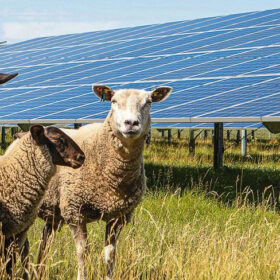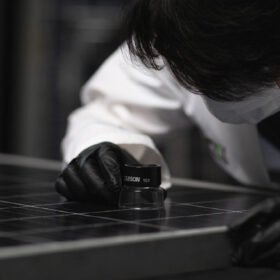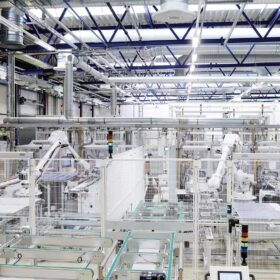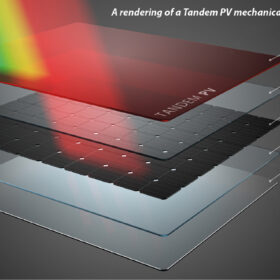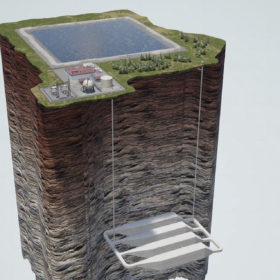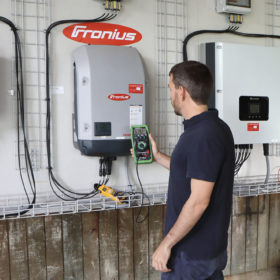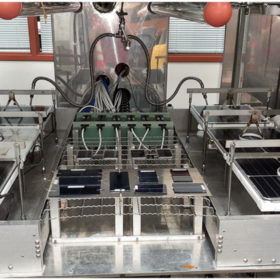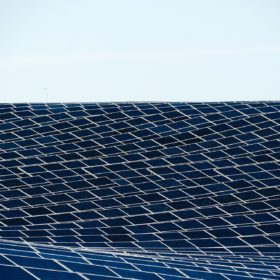NREL updates online tool with data for Africa, Eastern Europe, Middle East
The US Department of Energy’s National Renewable Energy Laboratory (NREL) has added a high-resolution solar data set covering Africa, Eastern Europe and the Middle East on its Renewable Energy Data Explorer tool.
Perovskite thin film: Out with the old, in with the new
Silicon-perovskite tandem solar requires optimization of both approaches, and embodies the weaknesses of each. Meanwhile, the use of pure thin-film devices offers a cheaper, simpler, and more sustainable PV solution for the United States.
Has the US caught up with European agrivoltaic deployment?
With so much more agricultural real estate than Europe, the United States is building on the body of research built up across The Pond and rolling out solar panels on farmland at an impressive rate.
Weekend Read: Temper tantrum
Reports of broken module glass with no obvious cause have begun to crop up at large PV projects. Module design, glass manufacturing, and interactions in the field between modules and trackers are at play and a clear solution has yet to emerge. Early signs suggest an update to certification standards may be needed.
Weekend Read: Waiting is not an option
In May 2022, PV experts from around the world convened in Germany for the third Terawatt Workshop. Almost one year later, takeaways from discussions at the workshop – combined with a wide-ranging review of research on decarbonization pathways, energy demand projections, and the state of the art in PV technology – led to the conclusion that 75 TW of installed solar capacity by 2050 was a realistic global target. More than 50 leading PV industry figures recently outlined the opportunity and the challenges that solar will face in reaching this goal.
Weekend Read: Pushing perovskite PV limits
The perovskite solar race is heating up, with a cue of manufacturers forming to test products at the US Department of Energy’s (DoE) PV commercialization facilities, and academics on both sides of The Pond announcing new advances in recent months.
Weekend Read: A long time coming
Long-duration energy storage (LDES) is essential for decarbonizing the grid but gigawatt-hour scale systems continue to be tricky for companies with big ideas. Here are some of the latest innovations across a flourishing array of new – and old – ideas.
Weekend read: Elusive longevity
The expected lifetime of PV inverters is significantly shorter than that of modules. In many projects, inverter replacement is included in financial calculations from the start, despite the high costs. Research is being conducted into the causes of faults to develop more durable inverters and components. But plant design can already improve the lifespan of inverters in use today, reports pv magazine Germany’s Marian Willuhn.
Putting bifacial modules to the test
US scientists recently put different bifacial solar cells and modules through a series of tests at elevated temperature, humidity, voltage and mechanical stress levels. The tests revealed a range of light-induced and potential-induced degradation mechanisms that modules will likely suffer in the field.
How to get to 100% emissions-free electricity
The National Renewable Energy Laboratory is exploring different paths to 100% emissions-free electricity in the United States.


